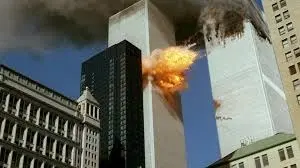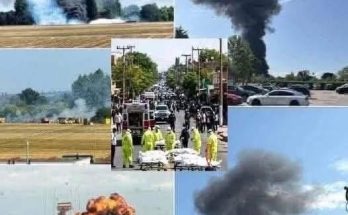Three More Victims Identified Nearly 24 Years After September 11 Attacks
Nearly 24 years after the September 11, 2001, terrorist attacks that claimed the lives of 2,976 people, three more victims have been formally identified through advancements in forensic DNA testing. The announcement, made on August 7 by the New York City Office of Chief Medical Examiner (OCME), reflects the city’s ongoing commitment to identifying every possible victim of the tragedy.
The three newly identified individuals are:
-
Ryan Fitzgerald, 26, of Floral Park, New York
-
Barbara Keating, 72, of Palm Springs, California
-
An adult woman, whose name remains private at the request of her family
These identifications bring the official number of confirmed victims from the World Trade Center attacks to 1,653. Despite the passage of time, this development highlights the enduring effort to bring closure to families who have waited decades for answers.

Remembering the Victims
Ryan Fitzgerald was at the beginning of a promising career, working at the foreign currency exchange desk at Fiduciary Trust in the South Tower of the World Trade Center. Having recently moved to Manhattan, Fitzgerald was experiencing his first taste of independent city life when the attacks occurred. Friends and colleagues remembered him for his optimism and dedication to his work.
Barbara Keating was traveling aboard American Airlines Flight 11 on September 11, 2001, when it was hijacked and flown into the North Tower. At 72 years old, she was remembered by family and friends as a loving grandmother, deeply involved in her community.
The third victim, an adult woman, remains unnamed in public records out of respect for her family’s privacy. Officials emphasized that this decision reflects a compassionate approach to balancing public history with personal grief.

Recovery and Identification Timeline
Authorities reported that the remains of Ryan Fitzgerald were recovered in 2002, a year after the attacks. The remains of Barbara Keating and the unnamed woman were found in 2001, in the immediate aftermath of the tragedy.
At the time, DNA technology was not advanced enough to confirm these individuals’ identities. Although thousands of remains were collected during the recovery operations at Ground Zero, many were too degraded for testing with the methods available two decades ago.
Over the years, scientific breakthroughs — including next-generation DNA sequencing — have allowed forensic experts to revisit previously inconclusive samples. Through renewed outreach to victims’ families and the use of cutting-edge techniques, OCME scientists were finally able to match genetic material to family reference samples, leading to these recent identifications.

Statements from Officials
New York City Mayor Eric Adams expressed his support for the families receiving long-awaited confirmation:
“The pain of losing a loved one in the September 11th terror attacks echoes across the decades. With these three new identifications, we take a step forward in comforting the family members still aching from that day.”
Dr. Jason Graham, Chief Medical Examiner, reaffirmed the city’s pledge to continue this work for as long as necessary:
“Nearly 25 years after the disaster at the World Trade Center, our promise to identify the missing and return them to their loved ones stands as strong as ever. Each new identification testifies to the power of science and the dedication to honoring the lost.”
The Largest Forensic Investigation in U.S. History
Since the September 11 attacks, the New York City Office of Chief Medical Examiner has led what is considered the most extensive and complex forensic investigation in U.S. history. The scope of the challenge is unprecedented — recovery teams collected more than 22,000 pieces of human remains from the World Trade Center site.
Even with modern DNA testing capabilities, around 1,100 victims remain unidentified. Many of the samples are extremely small or damaged due to the intense heat, pressure, and environmental conditions at Ground Zero. However, each advance in forensic science brings renewed hope to the families still waiting for confirmation.
The process involves:
-
Cataloging remains — Every fragment is carefully stored and labeled for future testing.
-
Collecting family reference samples — DNA from close relatives helps create genetic profiles for matching.
-
Applying advanced sequencing technology — This allows scientists to work with highly degraded DNA.
-
Verifying results through independent analysis — Confirmations are only made after rigorous quality checks.
Why These Identifications Matter
For many families, an official identification provides more than just a name in the historical record — it offers a final resting place and a sense of closure. Some choose to hold private memorials, while others incorporate the remains into public commemorations.
Mental health professionals note that receiving confirmation, even decades later, can be a pivotal moment in the grieving process. While it does not erase the loss, it often allows relatives to take meaningful steps toward healing.
Continuing the Mission
Officials have stated that the effort to identify victims of the September 11 attacks will not end until every possible case has been resolved. This commitment involves both maintaining existing evidence and staying at the forefront of emerging technologies.
The OCME continues to partner with laboratories and forensic experts around the world to explore new methods for extracting usable DNA from compromised samples. Additionally, family outreach programs ensure that updated contact information is on file, so any breakthrough can be communicated quickly.
Honoring the Legacy of September 11
As the 25th anniversary of the attacks approaches in 2026, New York City continues to honor the memory of those lost through both public ceremonies and quiet acts of remembrance. The National September 11 Memorial & Museum stands as a testament to the lives affected, offering a place for reflection and education.
The annual commemoration at the memorial includes reading the names of all confirmed victims — a tradition that reinforces the importance of giving every victim back their identity. Each new identification ensures that no life lost is left unrecognized.

Conclusion
The identification of Ryan Fitzgerald, Barbara Keating, and the unnamed woman nearly 24 years after the September 11 attacks serves as a powerful reminder of the enduring impact of that day and the relentless dedication of those working to bring closure to families.
Through a combination of advanced science, meticulous forensic work, and deep compassion, New York City’s commitment to honoring the victims remains steadfast. While hundreds still await identification, each step forward represents both a technological achievement and a profound human moment.
As history moves forward, these efforts ensure that the memory of every victim is preserved — not only in official records, but also in the hearts of the families, friends, and communities forever changed by September 11, 2001.




